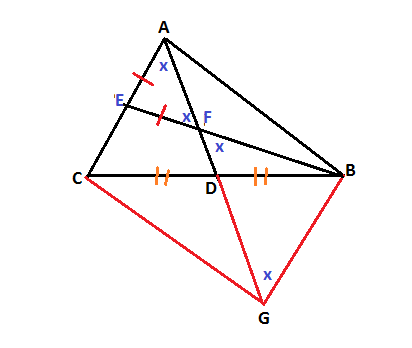Question #a40d8
2 Answers
see explanation.
Explanation:
Let
Given
Sine Law :
Given
Hence,

Given ABC a triangle where [AD] is the median and let the segment line [BE] which meets [AD] at F and [AC] at E If we assume that AE=EF, we are to show that AC=BF.
Construction
AD is extended up to G such that
Proof
Now in quadrilateral
In
Again
So
So
Again
Hence

